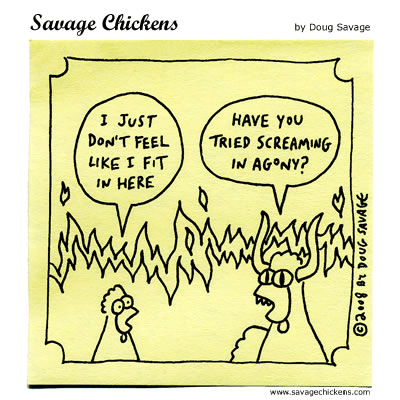The Day the Earth Stood Still
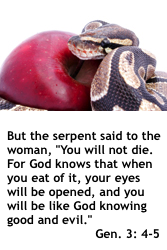 "Ad Deum qui laetificat juven tutum meam." The Latin is still engraved on my mind as I recall growing up just to the North of Boston in the 1950's and 1960's. The world seemed to have a natural order, and in that alone God gave joy to my youth. Then that order changed. It seemed as though the Earth stood still as everything upon it shifted left. Humans shape history, but history also shapes us. In my mind, the cascade of change in the world I knew began with a single event.I was ten years old in the sixth grade on November 22, 1963, a full year younger than the rest of my class. Our teacher, Mr. Dawson was quizzing us on Presidential succession. "What happens," he asked, "if the President dies?" I yawned. Three years earlier, the portrait of a balding, graying President Eisenhower had been replaced on our public school walls. No one could look at John Fitzgerald Kennedy and think of death.
"Ad Deum qui laetificat juven tutum meam." The Latin is still engraved on my mind as I recall growing up just to the North of Boston in the 1950's and 1960's. The world seemed to have a natural order, and in that alone God gave joy to my youth. Then that order changed. It seemed as though the Earth stood still as everything upon it shifted left. Humans shape history, but history also shapes us. In my mind, the cascade of change in the world I knew began with a single event.I was ten years old in the sixth grade on November 22, 1963, a full year younger than the rest of my class. Our teacher, Mr. Dawson was quizzing us on Presidential succession. "What happens," he asked, "if the President dies?" I yawned. Three years earlier, the portrait of a balding, graying President Eisenhower had been replaced on our public school walls. No one could look at John Fitzgerald Kennedy and think of death.
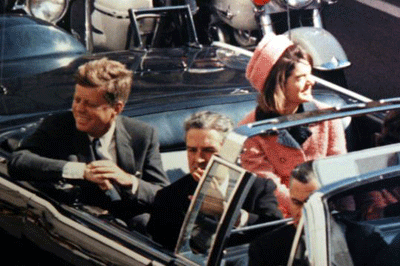
Just at that point in our class on Presidential succession, our Principal, Mr. Gilmore, pushed a button calling the school's attention to the P.A. system. President Kennedy had been shot in Dallas, Texas. President Kennedy is dead. In the stunned silence, I considered for just a moment that Mr. Dawson arranged this bizarre demonstration to make his point. How awful! But the look on his face gave it away.Then the Principal again: school was dismissed for the day. I collected my little sister from the fourth grade, and we walked the half mile home in silence. There were no school buses then. We walked to school, walked home for lunch, walked back to school, then home in the afternoon. I asked my sister a few days ago if she remembers this. She was only eight years old, but she vividly remembers that day.The city streets were eerie, the only people on them school children hurrying home. Everyone else was in front of a television. Children walked in earnest silence, knowing that something terrible had happened. Our world had just changed, and would never be the same again.At home, our mother was in front of the television crying, Walter Cronkite on the screen. It was all true. My dear mother, an emigrant from Newfoundland, had become a U.S. citizen at just about the time we changed Presidential portraits on our school walls. John F. Kennedy was the first President she had voted for. She took this very personally.But it was more than that. We were also citizens of the Commonwealth of Massachusetts and Greater Boston, the center of the known world. The Kennedys, then, were the Commonwealth's Royal Family. We knew nothing of ideology. The dividing lines of Catholic conscience and the culture wars were years away.In my mind, it was on November 22, 1963 that childhood ended. Its death throes went on for days, weeks, months as we were riveted to Walter Cronkite for all that was to unfold: Lee Harvey Oswald, Jack Ruby, the Warren Report. It was the end of innocence, and the world was now a dangerous and unpredictable place. Even as a child I had a sense that if I had to hear bad news, I'd rather hear it from Walter Cronkite. We all trusted him, and there has never been a suitable replacement.
THOU SHALT NOT PRAY
There were rumblings of change in the world before JFK's death. On March 18 in that same year, the U.S. Supreme Court banned prayer from public schools. In the second grade, Mrs. Walsh had begun each day by reading Psalm 23. We were better off for hearing it. In the third grade, Mrs. Eisenberg recited a Hebrew Berakah. We were better off for hearing that as well. We had no sense that the age of the individual had dawned, and our collective welfare - the very soul of our nation - was to be set aside to accommodate it.Nancy Reagan once said, "The '60's was the worst time in history to bring up children." In the six years from 1963 to 1969, the storm of my adolescence raged upon a chaotic sea. Each successive wave of change, fueled by crisis, smashed away at the remnants of consistency and order. If you were an adolescent in the 60's, then you remember how the chaos inside seemed to mirror the chaos outside. And what was going on outside was brutal. It's all a jumble of memory.1968 saw the assassination of Martin Luther King (April 4) then Robert Kennedy (June 5). It was a national horror. Then the TET offensive escalated the war in Vietnam, then revelations of the My Lai massacre, the Civil Rights movement at home - its violent suppression in the South playing out in everyone's living room. In May of 1968, nine Catholic priests were arrested for burning hundreds of selective service records at a draft office in Catonsville, Maryland. 1968 ended with the election of Richard Nixon.Before a single decade had passed since the day the Earth stood still - that day in the sixth grade that was the end of innocence - our country, our culture, and our collective and individual consciences had been radically challenged, and our societal values transformed.Ten years later, on January 22, 1973, the U.S. Supreme Court ruled in Roe v. Wade that human beings not yet born have no right to life. How on Earth did we come to that? The culture of death had arrived. Perhaps you can see why the Beatles’ “Hey Jude” took off like a rocket in 1968. Hope had been sucked out of the world and out of our lives. Some – many – of my peers reacted with drugs, despondency, even despair. Timothy Leary became a national icon of coping with change through self-indulgence.His advice to young people to “turn on, tune in, drop out” was published in The Politics of Ecstasy (ch.21, 1969). The grossly irresponsible sentiment infuriated me at fifteen, and still does.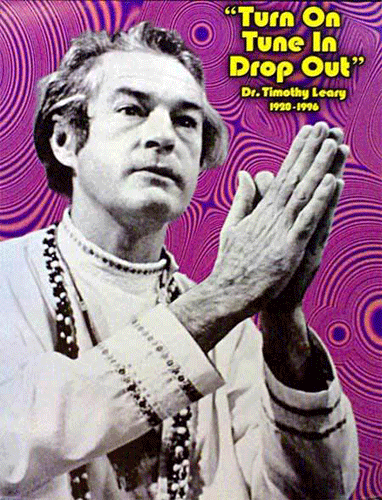
DISSENT AND DISCONTENT
I was just one month seventeen at high school graduation in 1970. Perhaps it was in part a reaction to the decade-long earthquake that was the world of my youth, but I went from being a Christmas & Easter cafeteria-Catholic as a child to embracing the only consistency left in the world. I began to attend daily Mass, and I began to pray. If you are my age, however, you know only too well that in the 1960's, Catholics were to be sorely tried. The Church as a monolithic rock of stability was about to have an earthquake of its own.In the Summer, 2009 issue of Catholic Men's Quarterly, Father Peter Stravinskas has an article taken from the preface of his new book, Be to Me a Father and a Priest. He wrote of having entered the seminary just a month after publication of Humanae Vitae, the 1968 encyclical that launched the culture war:
"With all the confusion and dissent conjured up by the mention of that watershed event in the life of the Church - an iconic conversation-stopper in 1968 and ever since . Not a few people have opined: 'You couldn’t have picked a worse time to enter the seminary.”
It was just after the close of the Second Vatican Council. The resultant confusion, shift in attitudes, and polarization had a devastating effect on seminaries, and on the future of priesthood. Father Stravinskas wrote of the turmoil to follow during his years of theology study in the seminary:
"The stock-in-trade ... was heresy in the classroom, liturgical abuses on a grand scale, degradations of traditional notions of priesthood, sexual immorality, and active persecution of seminarians who adhered to orthodox views of the Church and the ordained ministry. Add to that the approximately 100,000 priests around the world who left the active ministry during the last ten years of the pontificate of Pope Paul VI; it's a miracle the suction didn't take us all with them."
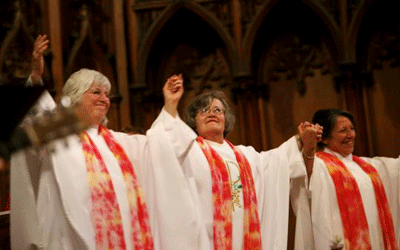
The description by Father Stravinskas is chilling. I began seminary studies just a few years after he did, and the above captured my experience exactly. I grew up as a liberal, Boston Irish (and Scottish) nominal Catholic; a "Kennedy Catholic." Irish Catholicism had arisen from its own poverty and despair, but forgot from whence it came.In the seminary, I watched as charity gave way to the drawing of ideological battle lines. A major shift in my own conscience formation came when I witnessed what Father Peter Stravinskas described:
Seminarians and faculty members openly ridiculing a small group of seminarians from the mid-West simply because they gathered in the chapel to pray the Rosary together one day.
I was horrified at the way they were singled out and ostracized, and I wasn't having it. On that day, I parted ways with the "trendy dissent" crowd. It was not their liberal theology that turned me away, or even their open heresy though, like Father Stravinskas, I knew it when I heard it. What turned me on my heel from them was the ease with which they abandoned the Gospel of Mercy in favor of dissent.
MASS HYSTERIA
In October, 1979, Pope John Paul II visited the United States. I was in my second year of theology studies at St. Mary's Seminary & University in Baltimore. A Pontifical Institute, St. Mary's is the oldest Catholic seminary in the United States. During preparations for the Holy Father's visit, plans were made for a Mass in Washington, DC, less than an hour's drive from Baltimore. The seminarians at St. Mary's were invited to participate. Those installed in the ministry of acolyte were invited to assist at the Mass. What was to follow, however, was a typical sign of the times.The rector of St. Mary's Seminary, for his own reasons, declined the invitation on behalf of the faculty and students and without ever informing us. When seminarians learned that we had been invited to participate in a Mass with the Holy Father, and learned that the invitation had been declined by our rector, many revolted and made independent plans to attend.
In a seminary-wide meeting, the rector informed us that our seminary would not be represented at the Papal Mass. He refused to give a reason, but stated that any student who opted to attend on his own would not be sanctioned to do so, and would not be excused from classes or any seminary activity on that day and would be disciplined accordingly.
FLAT-OUT WRONG
We had a Kafkaesque choice: disobey the rector and honor the Holy Father, or obey the rector and dishonor the Pope’s visit. The dividing line was crystal clear. Those on the left – including most of the faculty at the time – quietly acquiesced to the rector’s determination to use the event to express open dissent – contempt even – for papal authority. Those on the right – and many, like me, hovering in the ideological middle, were in open rebellion of the fact that someone with an agenda declined the invitation in our name. The saddest part of this dismal story is that many of the seminarians appealed to their bishops to intervene. None did.In the end, what was meant to be a sign of unity in the Church was transformed into an open battle in our seminary. The rector, a Sulpician, was a priest from my diocese. He was particularly incensed when I – the only seminarian from our diocese there – signed a petition challenging his authority to bar Catholic seminarians from attending a Mass with the Pope. On October 7, 1979, more than 200,000 people gathered on the National Mall in Washington, DC to welcome the Holy Father and celebrate the Eucharist with him. Of this event, biographer George Weigel wrote in Witness to Hope (HarperCollins, 2002):
“John Paul ended his American pilgrimage where Thomas Jefferson began the Declaration of Independence, with the inalienable right to life.”
Priesthood candidates in attendance from the oldest Catholic seminary in the United States were present under an implied threat of dire consequences, and without the blessing of our seminary. We were to return from the Mass to face open hostility and disdain from a seminary administration that maintained a list of those who defied their authority.No one can read this account and not see, with the tools of hindsight, that dissent at the expense of charity and justice has brought much harm upon the Church. In an essay for Catholic Culture, “Dealing with Dissent,” Ronald J. Rychlak wrote:
“Not every priest, nun, or other Catholic speaks for the Church. Catholicism is a big tent. There are lots of people inside of it, and not all of them are well informed. Some are flat-out wrong.”
The rector of my seminary was “flat-out wrong.” So were those described by Father Peter Stravinskas who treated orthodoxy and respect for tradition with contempt. There is a home, in our Church, for diversity that does not tear at the fabric of unity. There is no home here for contempt.
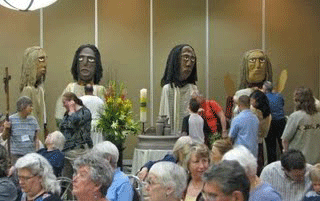
Speaking on fifty years of priesthood and his new book on Purgatory, After This Life, Father Benedict Groeschel recently reflected:
“I’m looking forward to purgatory,” he said. “I’m from Jersey City and it’s just like purgatory. I’ll be right at home.” (Tom Hoopes, “A Reluctant Jubilee,” OSV, Oct. 18, 2009).
I laughed, of course, and then thought about purgatory. If it’s anything like the 1960’s and 1970’s, however, I won’t be right at home at all. I’ll start stepping up my prayer and good works now.